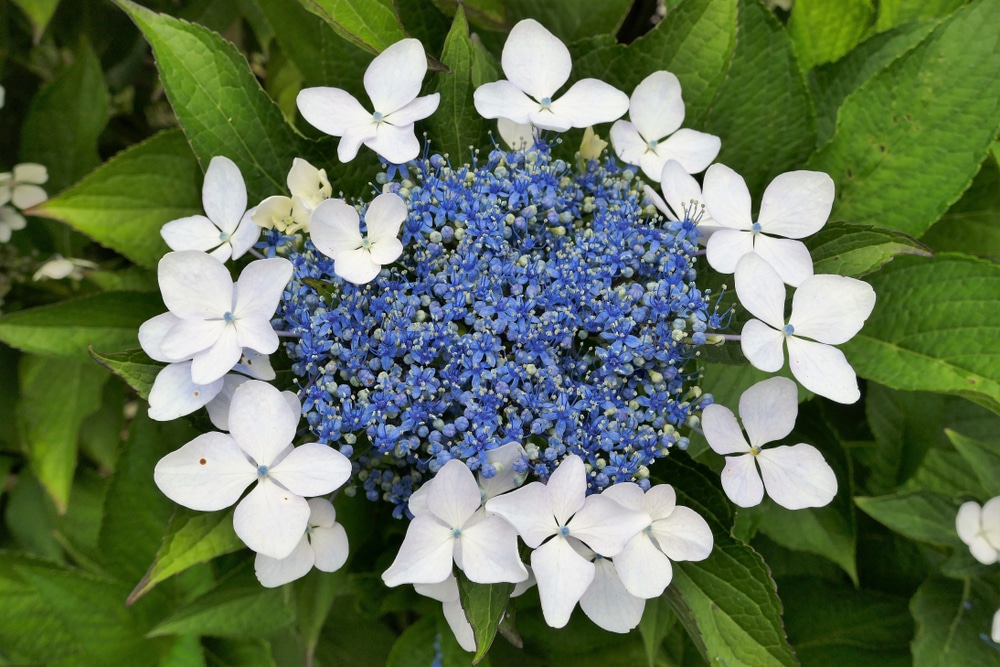
Variegated Hydrangea is a very attractive flower with dazzling green foliage enclosed by white margins. It produces beautiful early summer flowers. The flowers are clustered with white and pink blooms. They are usually showy with a moderate need for water for growth. Variegated hydrangea is a fast-growing plant that has round shrubs. The height of this plant reaches up to six feet. As there are more than eighty different species of hydrangea, only a few can become an addition to house plants.
Variegated hydrangea is one of them, this addition in the garden pulls out all showy stops for experienced and novice gardeners. In some cases, people can run into problems when trying to grow these flowers. A common issue that you might notice is that variegated hydrangea is not blooming. If you are getting the same problem, then going through this article should help you in finding some possible reasons behind it as well as ways that can be used to fix them.
Variegated Hydrangea Not Blooming
- Variegated Hydrangea Might Not Be Pruned Properly
When growing flowers like these in your home, people should first understand the steps required to keep them maintained. When it comes to this, pruning the excess branches of the plant is an important step. This requires users to remove stems that are sticking out from the plant or if these are dead.
Talking about this, the technique is slightly technical for beginners which is why a specialist can be contacted to get your flowers pruned. However, if you want to do this on your own then start by observing the plant.
Make sure that you remove all the dead leaves and branches from it. When making cuts on the branches, people have to remove these from the start of the branch so that they don’t continue growing. This helps in keeping the plant under control as well as ensuring that new flowers can start blooming once the variegated hydrangeas are in season.
Aside from this, another thing to keep in mind is that over-pruning can cause an inverse effect as it also stops the plant from blooming. In this case, the flowers will take a longer time to grow back the branches that have been damaged. This can take a few months at times which is why people will not be able to get any flowers the following year.
- People Might Be Using Too Many Fertilizers
Flowers like variegated hydrangea require nutrients to keep themselves healthy. This is why people often add fertilizers to their soil to ensure that the plant receives all the minerals required by it. When it comes to this, you should understand that there are also some problems that you can run into.
Even though fertilizers are important for the plant, using a high quantity can sometimes prevent the plant from blooming instead. This is why keeping a balance is essential. Other than this, the brand that you decide to get your fertilizers from also plays a huge role in how these will perform.
This is why selecting a reliable product can be important so that your hydrangeas stay healthy. The fertilizers should also be added after at least 3 weeks as the minerals inside them get consumed during this. People who had been adding these frequently should avoid doing this so that their problem does not appear again.
- Weather Conditions Around Your Hydrangea
The weather conditions in your area also play a huge role in how the plant will grow out. If you notice that the flowers are not blooming, then there is a chance that your plant might not be healthy. The first thing that should be done is that you keep the plants in a spot where they can get long hours of sunlight. Usually, 6 to 8 hours are enough for flowers that are in regions with a colder environment.
On the other hand, if you live in a warmer climate then about 4 to 6 hours and even partial shade can be more than enough to keep the flowers blooming. People should also make a habit of watering their flowers, but this should only be enough to keep the soil moist. Having a drainage system in your garden is a great way of ensuring that extra water does not collect inside the soil.
